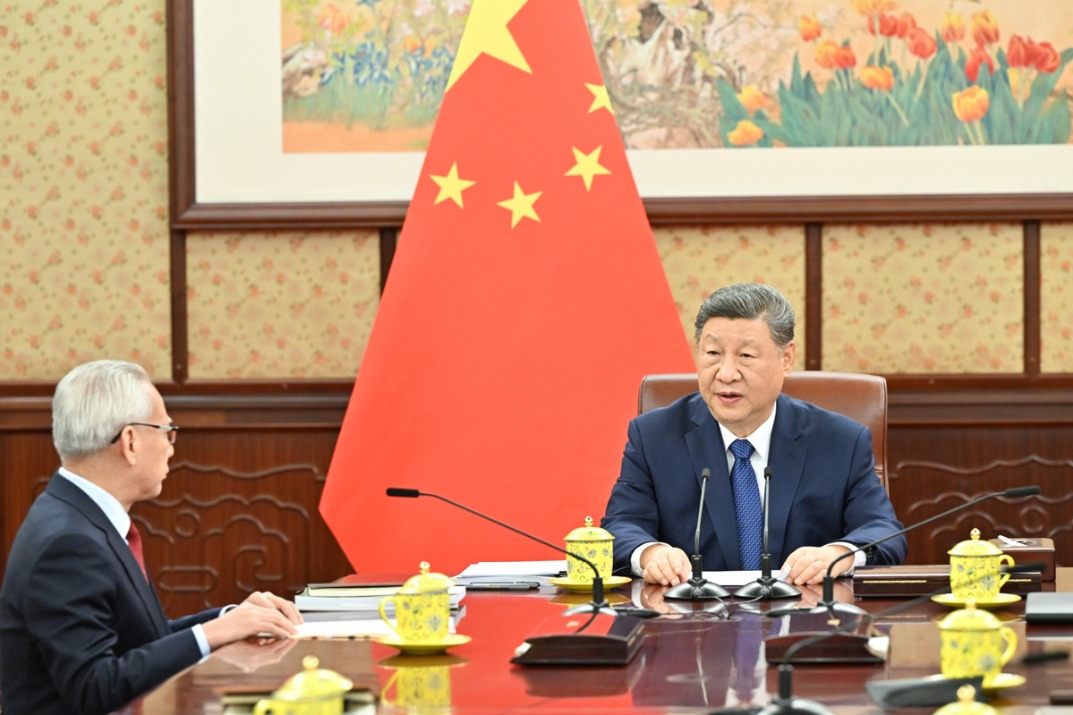Birth of the Jade Rabbit

|
Researchers perform experiments as they work to design the lunar rover. Provided to China Daily |
Little by little, Yutu's weight fell from 200 kg to its final 136 kg.
Experience gained from reducing the weight, such as the multi-functional design of the solar panel and the integrated electronic technology, could be adapted for future spacecraft, Jia says.
One night on the moon is about 14 days on Earth, during which the temperature falls below minus 180 C. The storage battery could provide heat for Yutu during the moon night, but it was abandoned because it was too heavy.
Researcher Shao Xingguo came up with an idea of making use of the gravity of the moon to develop a two-phase fluid circuit.
This would act like a heating pipeline to transfer the heat emitted from the radioisotope heater units outside the rover body to warm the instruments inside.
According to the initial plan, Yutu had to find a suitable position before the arrival of the lunar night so the sunlight could reawaken it a fortnight later.
However, after Yutu landed on the moon, it would be unable to find such a position, so it would use its trump card, rolling some of its wheels to dig a little pit to adjust its angle.
The solution was inspired by solving another problem.
In 2005, the US Mars rover Opportunity became trapped in soft sand and engineers struggled for a long time to get it out.
"It was a warning for us," says Jia. Being trapped in the lunar soil was possible. So we conducted trials. We buried one third or half of the wheels in soil to test how to get it out by turning the wheels and adjusting its posture."
"And then we thought the posture adjustment method could be used to prepare for the moon night."
Yutu made contact with the moon on December 15 last year, but in its first month ran into operational difficulties, including being unable to move and communication with it being lost. However, communication was restored, and Yutu continues to gather data.
Only about half of the more than 100 lunar exploration missions by all countries have succeeded.
"The rover was not as complicated as an aircraft or aircraft carrier, but the severe and unpredictable environment on the moon and the fact that the rover could not be repaired after its launch increased the difficulty and risk of the mission," Jia says
To ensure the success and safety of China's space missions, the use of new products and new technology on each spacecraft is usually limited to less than 30 percent, but they exceeded 80 percent on the Chang'e-3 lunar probe.
An exhaustive program of tests was conducted in the months before launch.
A 800 square meter laboratory was built within the China Academy to simulate the lunar environment.
A 50-cm deep floor of volcanic ash similar to the lunar soil was dotted with rocks and craters.
Here Yutu's ability to move, turn, climb, cross obstacles, take pictures, send messages and detect soil content was tested.
"Although we did our utmost, residual risks remained. The pressure was huge," Jia says.
Even though China lags far behind the US and Russia in space exploration, it does boast a large new generation of young scientists, expert and dedicated in the field, and the average age of the developers of the Chang'e-3 lunar probe is in the early 30s.
When Sun Zezhou was appointed chief designer, he was just 37, and the youngest chief designer in the country's space program.
Sun Jiadong, chief designer of China's lunar exploration project, believes this young team will create a 20-year golden age for space exploration.
|
Models of Yutu. Researchers say some may think the moon rover is not pretty, but it is perfect in their eyes because it meets all the technological requirements. Provdied to China Daily |
(China Daily Africa Weekly 07/04/2014 page24)
Today's Top News
- Opening of new gateway can help foster global economic and trade cooperation
- The farmer, the snake and Japan's memory hole
- Crossing a milestone in the journey called Sinology
- China-Russia media forum held in Beijing
- Where mobility will drive China and the West
- HK community strongly supports Lai's conviction
































